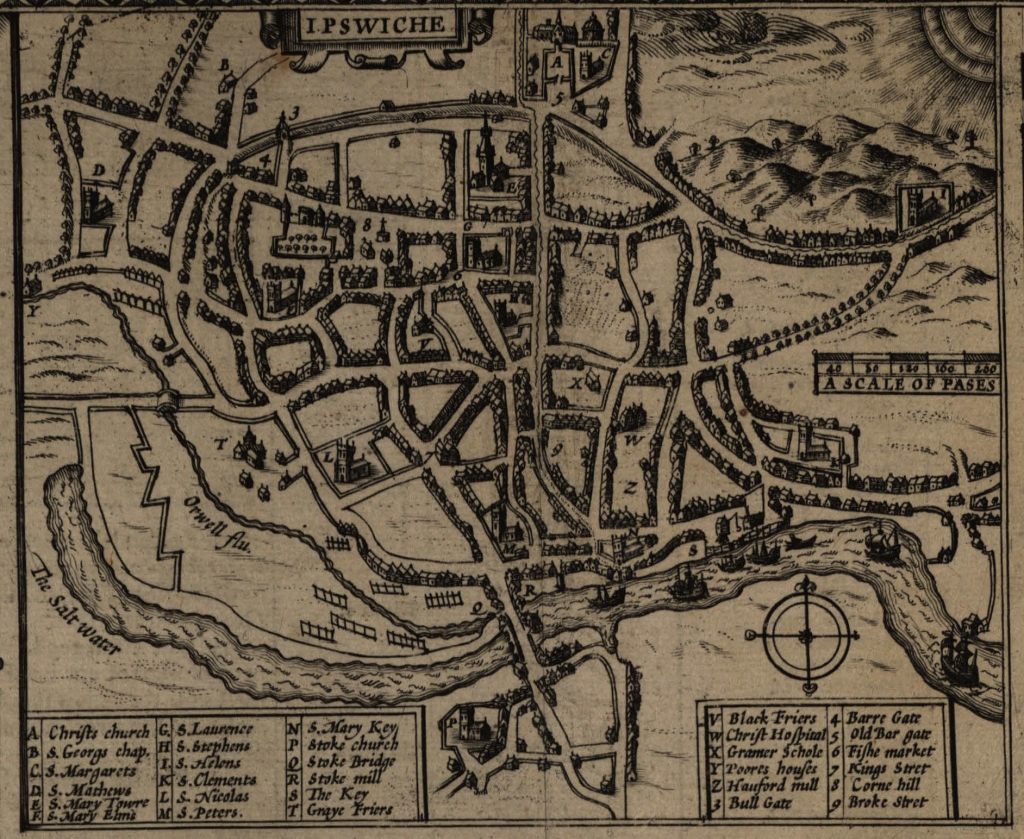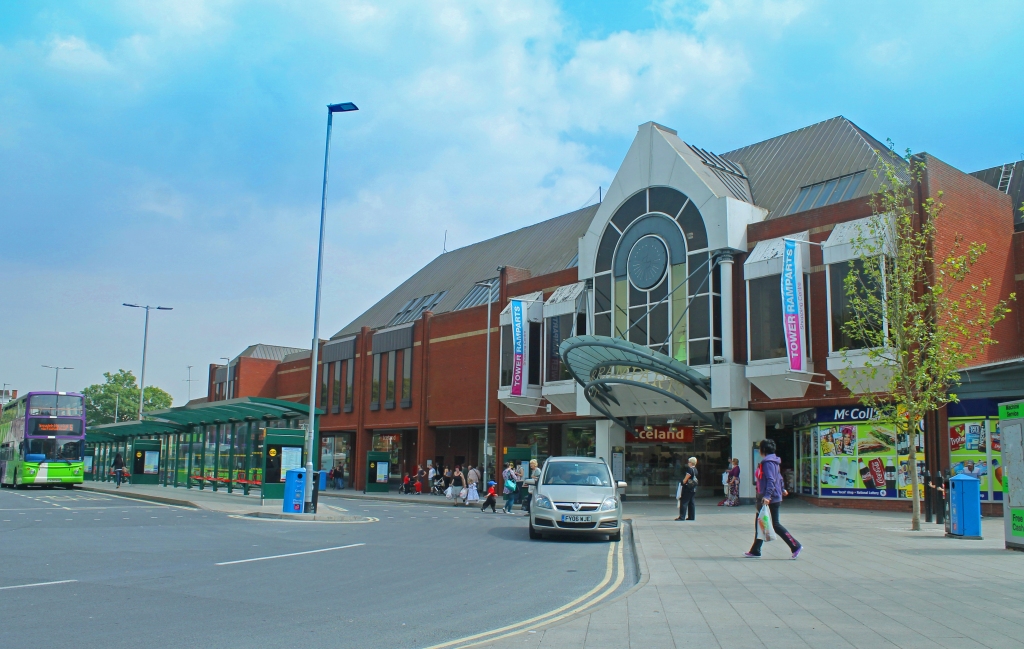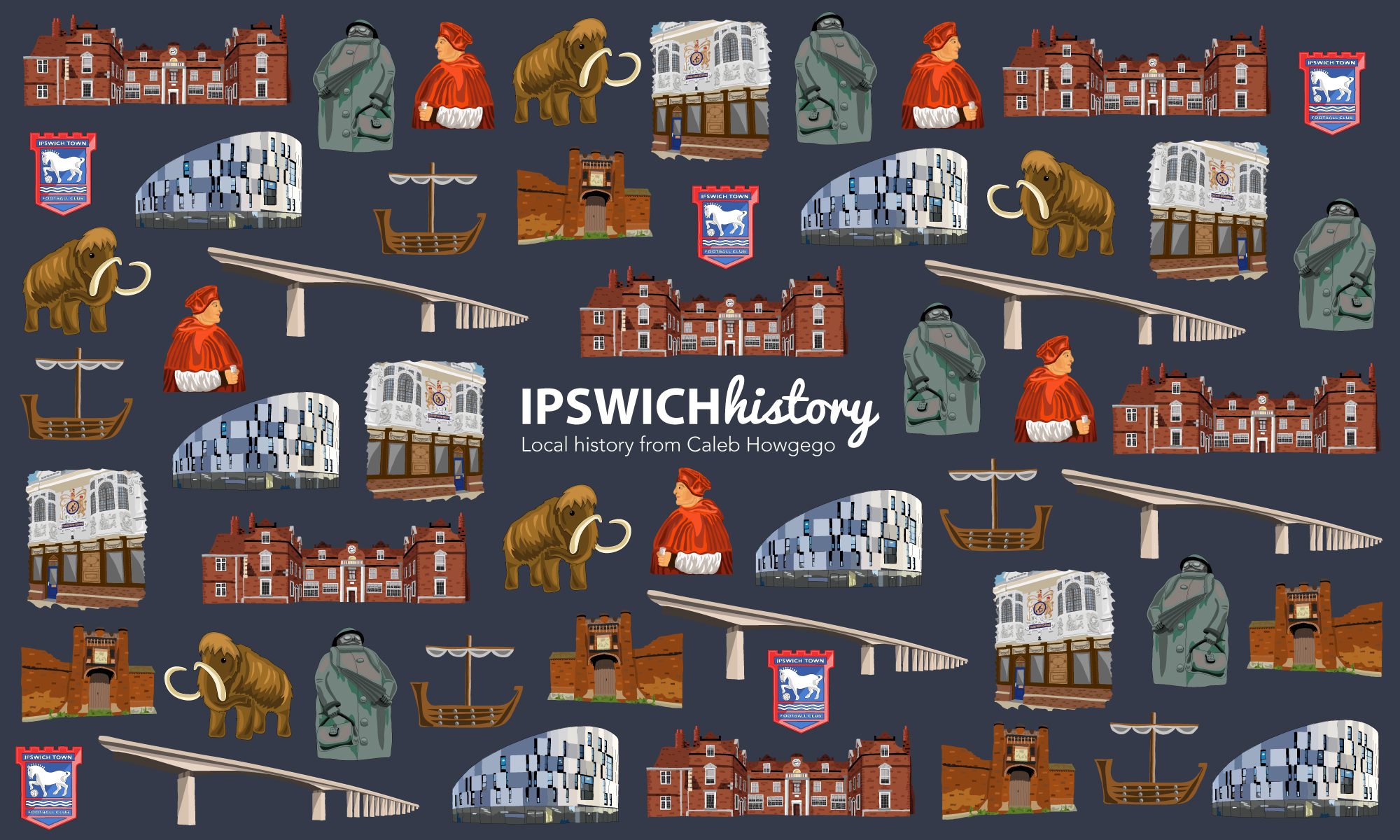Ipswich wasn’t always the relatively peaceable town we find it today. There was once a time it was subject to raids, occasionally even from continental marauders. One way the people of medieval Ipswich tried to bring greater security to their town was by the building of a defensive perimeter. Today there appears to be no trace of an ancient town wall in Ipswich, so what were the town defences and when did they disappear?
A record survives that mentions town ditches being dug in 1203 but this may have been referring to the extension of an even older defensive line. While some references are made to town walls in documents over the following several centuries, more often the defences are referred to as the “great ditches of the town”. An order in 1604 for a gravel path to be laid upon the top of the walls makes it clear that most, if not all, of the ramparts at this point were an earthen bank rather than a stone wall. It therefore seems probable that the defences consisted of a line of ditches and earthen ramparts with walls connecting them at their weakest points. This defensive line would have curved round the west, north and east edges of Ipswich – the southern edge of town ran down to the River Orwell. As the town grew, communities developed on the outside of the ramparts but those living inside enjoyed greater security although paid more tax for the privilege.
While the extent to which stone walls where used seems to have been minimal, there were certainly stone gates placed at intervals around the town ramparts. Ipswich has historically been more of a centre for trade than a military stronghold and the gates were used as much to regulate trade as for security. Cart-loads of goods would arrive at these gates and then be either allowed in or refused entry to the town. One of the most impressive of these was the West Gate, an imposing structure with battlements, which in 1448 was converted to also house a gaol for many years.

The Westgate was demolished in the 1780s and by the early 1900s pretty much all of the ramparts, ditches and gates had disappeared. The last obvious place any of the former defences could be seen was to the north of the town where some Victorian Houses were perched on top of an earthen bank. This area was then flattened and turned into a space for a car park and later became the bus station at Tower Ramparts.

While the physical remains have disappeared, the memory of the ramparts and gates live on today in place and street names in Ipswich such as Tower Ramparts and Northgate Street. The nearest we can get to seeing any of the town defences now is by paying a visit to the Halberd Inn, as it is said that the last traces of the North Gate have been incorporated into the cellar of this building.
